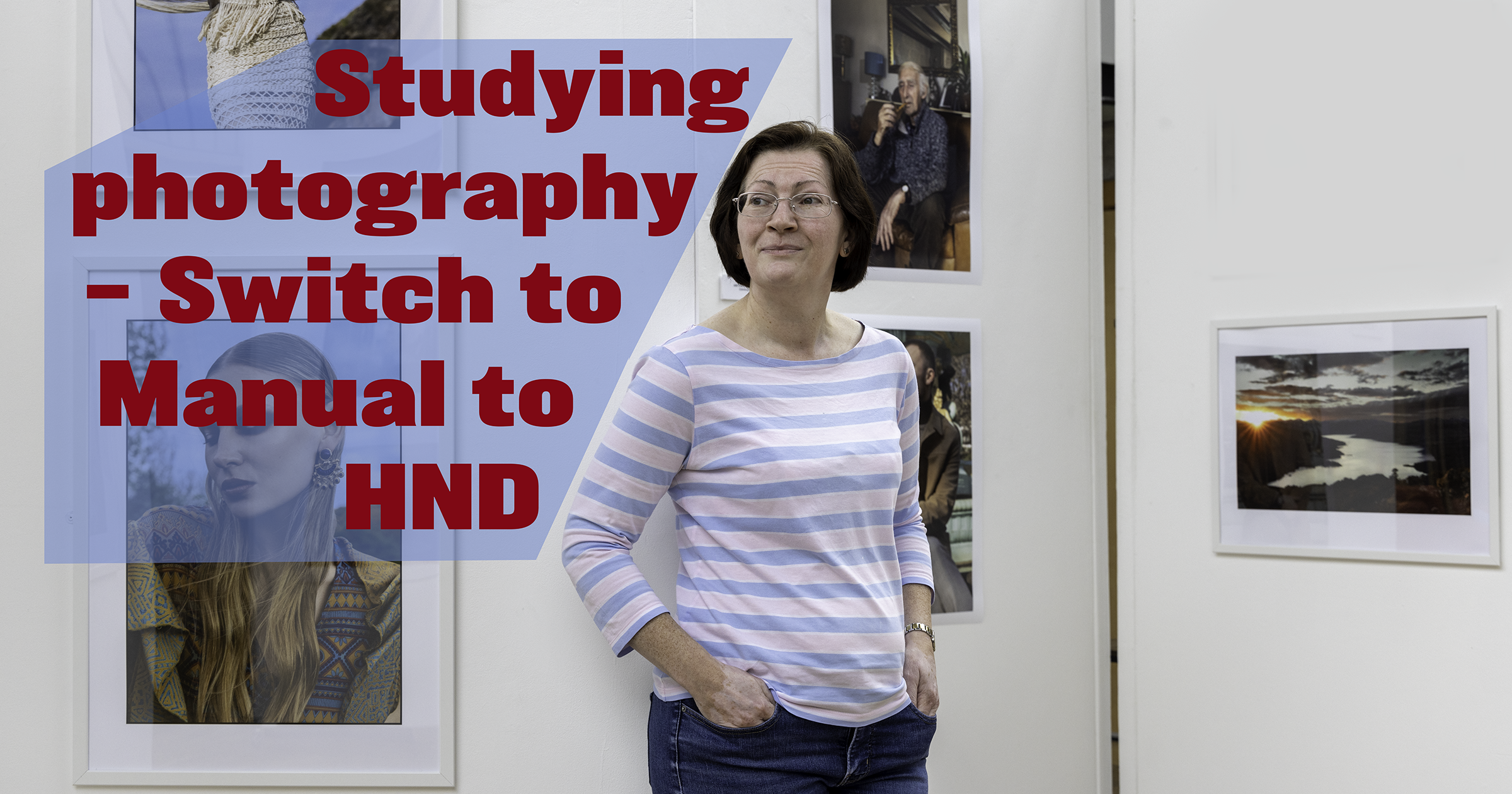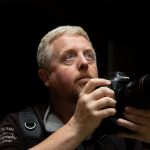June 1, 2022
Studying photography – Switch to Manual to HND
This week, we feature Susan Allan’s journey from attending the Switch to Manual workshop to passing an HND in photography

Before I became a full-time photographer, I worked in the finance industry, running a team of analysts. I was never prouder when one of the team left to advance their career by moving to a better job. I guess that’s why I enjoy running my photography workshops. It’s a real sense of accomplishment to see someone who started their photographic journey with me and has progressed to start their journey into the industry.
I received a mail last week from Susan Allan, who attended the Switch to Manual beginners’ workshop in July 2019. She invited me to see the exhibition for students at Edinburgh College who had passed their HND or BA in Photography this year. I thought that would be an excellent opportunity to chat and see how the journey from absolute beginner to formal qualification happened.
When did it start?
In 2019, Susan had just bought her first ‘professional’ digital camera, the Canon 4000D. The first lesson she took using the new camera was the Switch to Manual workshop. Susan commented, “The whole thing of starting from understanding how to use the manual functions, I think, has stood me in good stead. Now I’m finding I struggle more with automatic modes like aperture and shutter priority. I have to think the other way around. Many people who have been used to using the Auto modes struggle a wee bit more on getting used to manual”. Susan said she was really glad to have understood the basics as it helped in her HND course. The first year is very much about understanding the technical aspects, and the second concentrates more than on planning and executing shoots.
When Susan attended the workshop, she had just finished working. Initially, she thought she’d like to study art but was far too slow at painting. Realising many of her paintings were produced from initial photographs, she chose instead to apply her efforts to learning photography, which, as she is keen to state, is also a form of art.

When did you decide you wanted to study more formally?
Susan knew that she wanted to pursue a career in photography but didn’t know how. She attended some adult education classes with John Glynn for around a year. It built on the Switch to Manual sessions and encouraged the group to take photos around Edinburgh. It was very much about getting the basics imprinted. After that, Susan decided to take it further and went to an open day at Edinburgh College in Granton.
The college was very keen to impress anyone attending the open day that it wouldn’t be an easy process. They said they only take on the best, which scared Susan as she thought that she didn’t have anything to show them, never mind a portfolio. But she pressed ahead, knowing that she’d gained the basics and was particularly keen not to have to do the HNC course, firstly because it felt like a repetition of what she already knew, but more importantly would use up funds that she didn’t have.
What did you have to do to access the HND?
For the HND photography course, Susan was required to submit a portfolio of around twenty photographs. However, the college also recommended in the lead up to submitting her images that she attends a class at Edinburgh College. She signed up for a studio lighting course with Rosalyn Gaunt. Halfway through the course, COVID hit, and all the tutorials moved to Zoom. Quite a few of the group became discouraged and wanted to be in the studio. Susan was more pragmatic and only had a camera that didn’t have a hot shoe to add a flash. She upgraded her equipment to a second-hand 80D and a flash, then set about ‘having a bit of a play in the house’ with different types of lighting, including torches. It was really difficult with a small amount of space in the house and setting up a mini-studio in the bedroom. As a result of the course and her portfolio, Susan was accepted onto the HND course.

How was the HND course?
The first year of the HND was done over Zoom calls. After the initial lockdowns, students were allowed to go out to take photographs as long as they were for educational purposes. Susan thought the easiest thing to do would be to use a local park as a subject and did a project called ‘Park Life’. She conceded that if she had tried to do a portraiture project, it would have been a lot more difficult with the social distancing rules in place.
The second-year was much easier as the entire course was face-to-face in the studio. Susan had decided that she enjoyed landscape photography more than other forms but realised she lacked the commercial skills. The final year at Edinburgh College started to show what photographers have to do as well as just clicking a button. The course showed how organised a professional photographer has to be. The course requires students to write briefs that say what they are going to try and photograph and how they will go about doing it. It’s not a case of flying out the door with a camera but instead thinking about what happens in certain circumstances. What’s the plan if it’s raining or full-on sunshine. What kit is needed? What access is required? That process opened Susan’s mind to thinking more objectively about what it takes to get a photograph?
The college has given students a kit on what a client would expect from a professional photographer. It sets out what a client would expect. The kind of behaviours that you should exhibit, for example, not under-cutting fellow photographers on price. How to look at the marketplace and create strategies to make it a profession.
What next?
Susan has passed the HND course and is now planning to undertake the BA in Photography at Edinburgh College. The next year is a lot more commercial and business focussed. The BA looks at how to set yourself up as a photographer and market yourself in the workplace. It teaches a photographer how to either be a freelancer or be employed as a photographer.
Following the BA, Susan hopes for some inspiration for her future career. She has a few ideas about where she’d like to go but needs help understanding where the market is going and how she can find a place in it. She is keen on landscape and architectural photography. The BA course has a major project as part of the end assessment, and this is where she’ll be pursuing her next year of study.
Get your own inspiration
The successful BA and HND students have an exhibition, Exposed 22, running from June 1 to June 9 at Out of the Blue Drill Hall, 36 Dalmeny Street, Edinburgh. The exhibition shows the breadth of photography by the Edinburgh College students and is well worth a visit if you live close to Edinburgh.

Please give us your feedback.
If you’ve got any questions or comments, leave them below. You can sign up for the Edinburgh Photography Workshop monthly newsletter, where you’ll get regular updates on exciting things happening in photography and some great tips. Sign up by clicking here.
About the author
 As well as running Edinburgh Photography Workshop, Rich Dyson is a professional photographer. His photographs are regularly used in newspapers such as The Times, Guardian and Daily Telegraph. He also had two solo exhibitions and was featured in a members sponsored exhibition in the Scottish Parliament. You can see and buy his photography at richdysonphotography.com.
As well as running Edinburgh Photography Workshop, Rich Dyson is a professional photographer. His photographs are regularly used in newspapers such as The Times, Guardian and Daily Telegraph. He also had two solo exhibitions and was featured in a members sponsored exhibition in the Scottish Parliament. You can see and buy his photography at richdysonphotography.com.